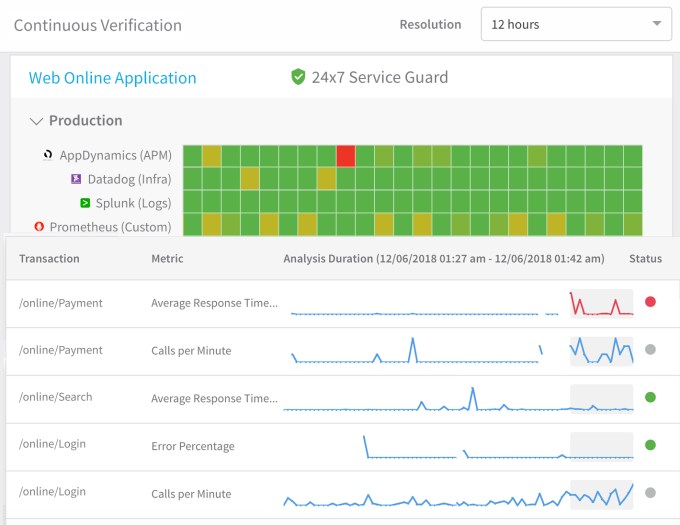As companies shift to CI/CD (continuous integration/continuous delivery), they face a problem around monitoring and fixing problems in builds that have been deployed. How do you deal with an issue after moving onto the next delivery milestone? Harness, the startup launched last year by AppDynamics founder Jyoti Bansal, wants to fix that with a new tool called 24×7 Service Guard.
The new tool is designed to help companies working with a continuous delivery process by monitoring all of the builds, regardless of when they were launched. What’s more, the company claims that using AI and machine learning, it can dial back a problematic build to one that worked in an automated fashion, freeing developers and operations to keep working without worry.
The company launched last year with a tool called Continuous Verification to verify that a continuous delivery build got deployed. With today’s announcement, Bansal says the company is taking this to another level to help understand what happens after you deploy.
The tool watches every build, even days after deployment, taking advantage of data from tools like AppDynamics, New Relic, Elastic and Splunk, then using AI and machine learning to identify problems and bring them back to a working state without human intervention. What’s more, your team can get a unified view of performance and the quality of every build across all of your monitoring and logging tools.
“People are doing Continuous Delivery and struggling with it. There are also using these AI Ops kinds of products, which are watching things in production, and trying to figure out what’s wrong. What we are doing is we’re bringing the two together and ensuring nothing goes wrong,” Bansal explained.

24×7 Service Guard Console. Screenshot: Harness
He says that he brought this product to market because he saw enterprise companies struggling with CI/CD. He said the early messaging that you should move fast and break things really doesn’t work in enterprise settings. They need tooling that ensures that critical applications will keep running even with continuous builds (however you define that). “How do you enable developers so that they can move fast and make sure the business doesn’t get impacted. I feel that industry was underserved by this [earlier] message,” he said.
While it’s hard for any product to absolutely guarantee up-time, this one is providing tooling for companies who see the value of CI/CD, but are looking for a way to keep their applications up and running, so they aren’t constantly on this deploy/repair treadmill. If it works as described, it could help advance CI/CD, especially for large companies who need to learn to move faster and want assurances that when things break, they can be fixed in an automated fashion.
from TechCrunch https://ift.tt/2UGjTOk

No comments:
Post a Comment